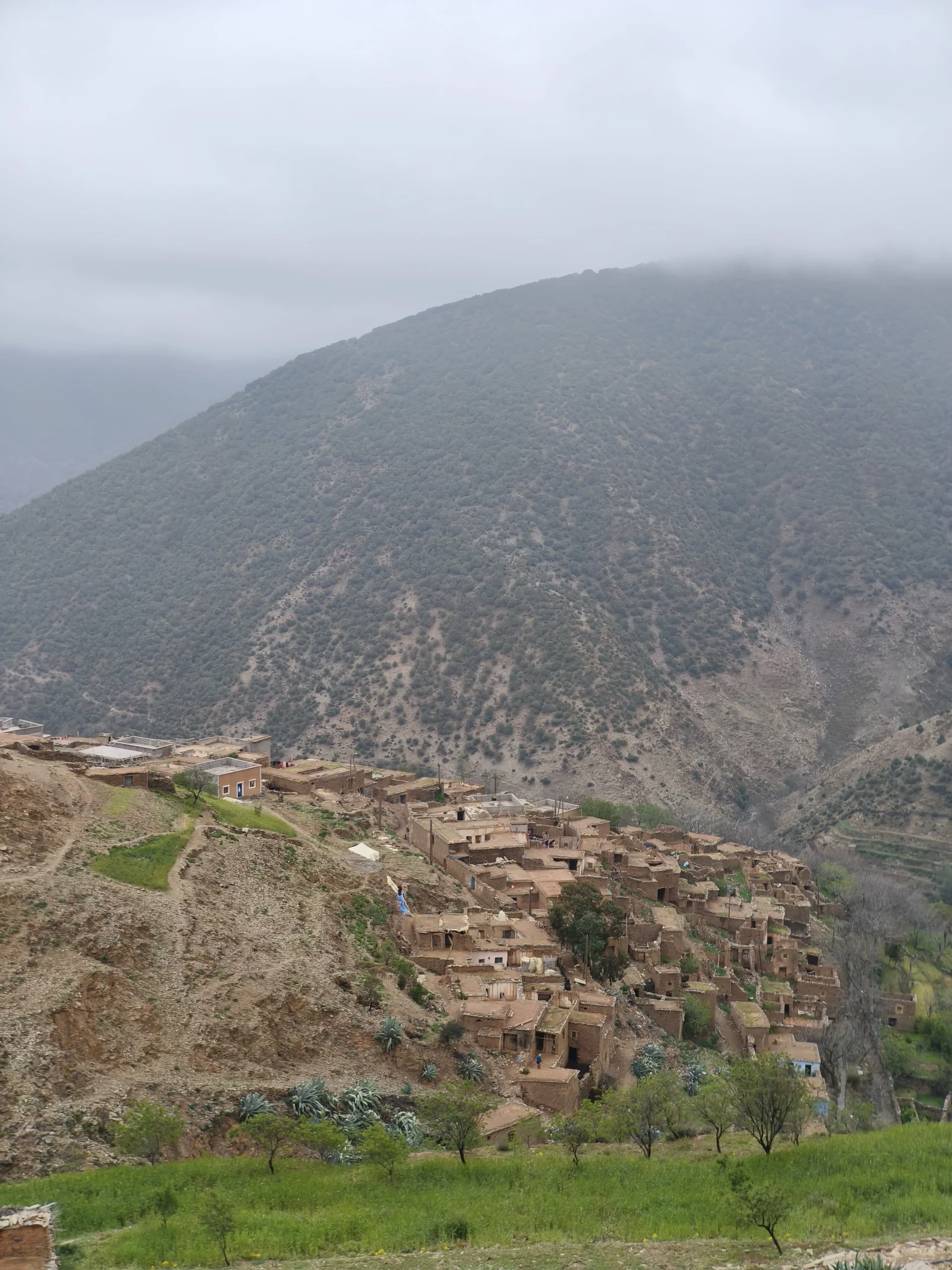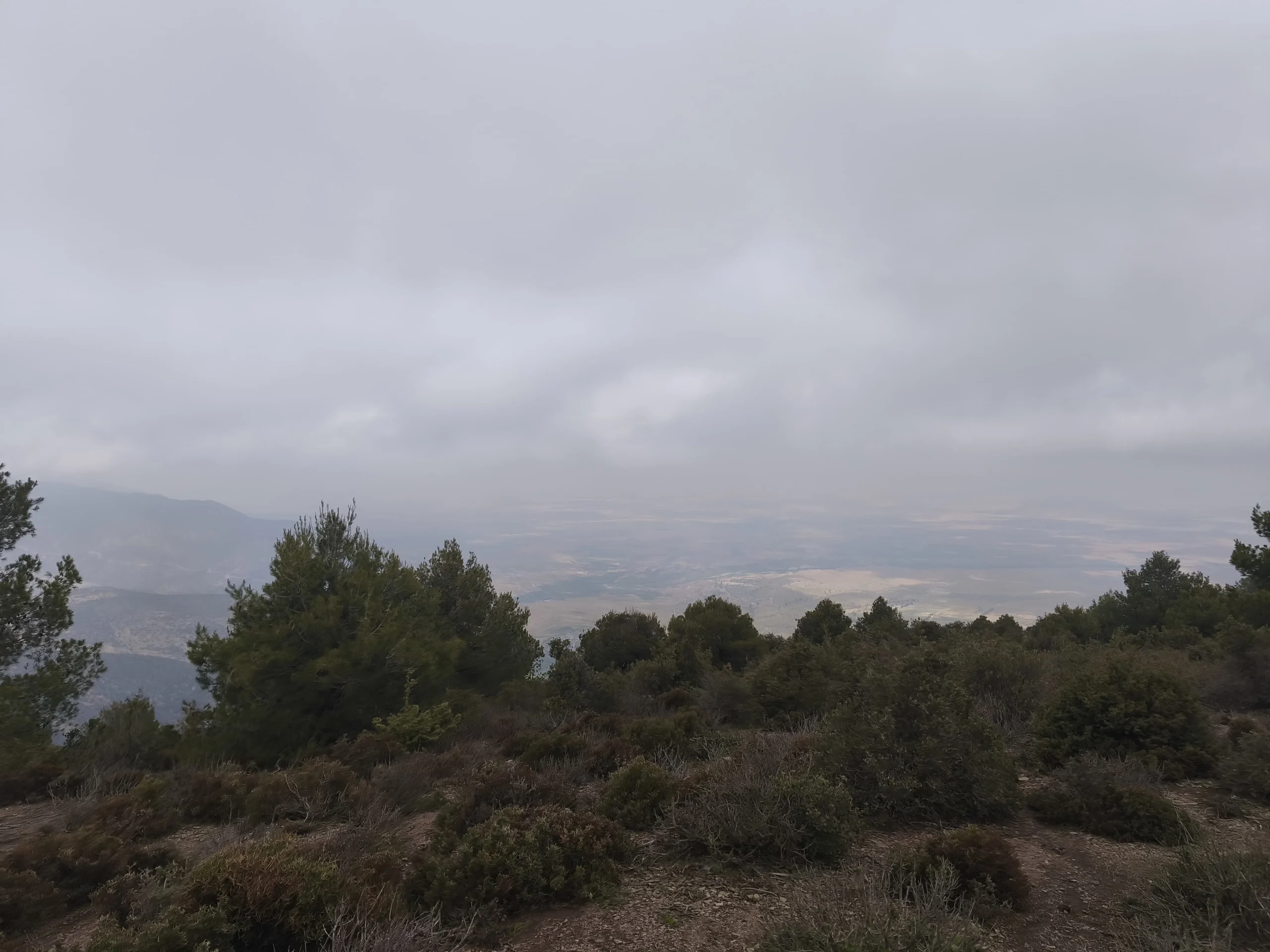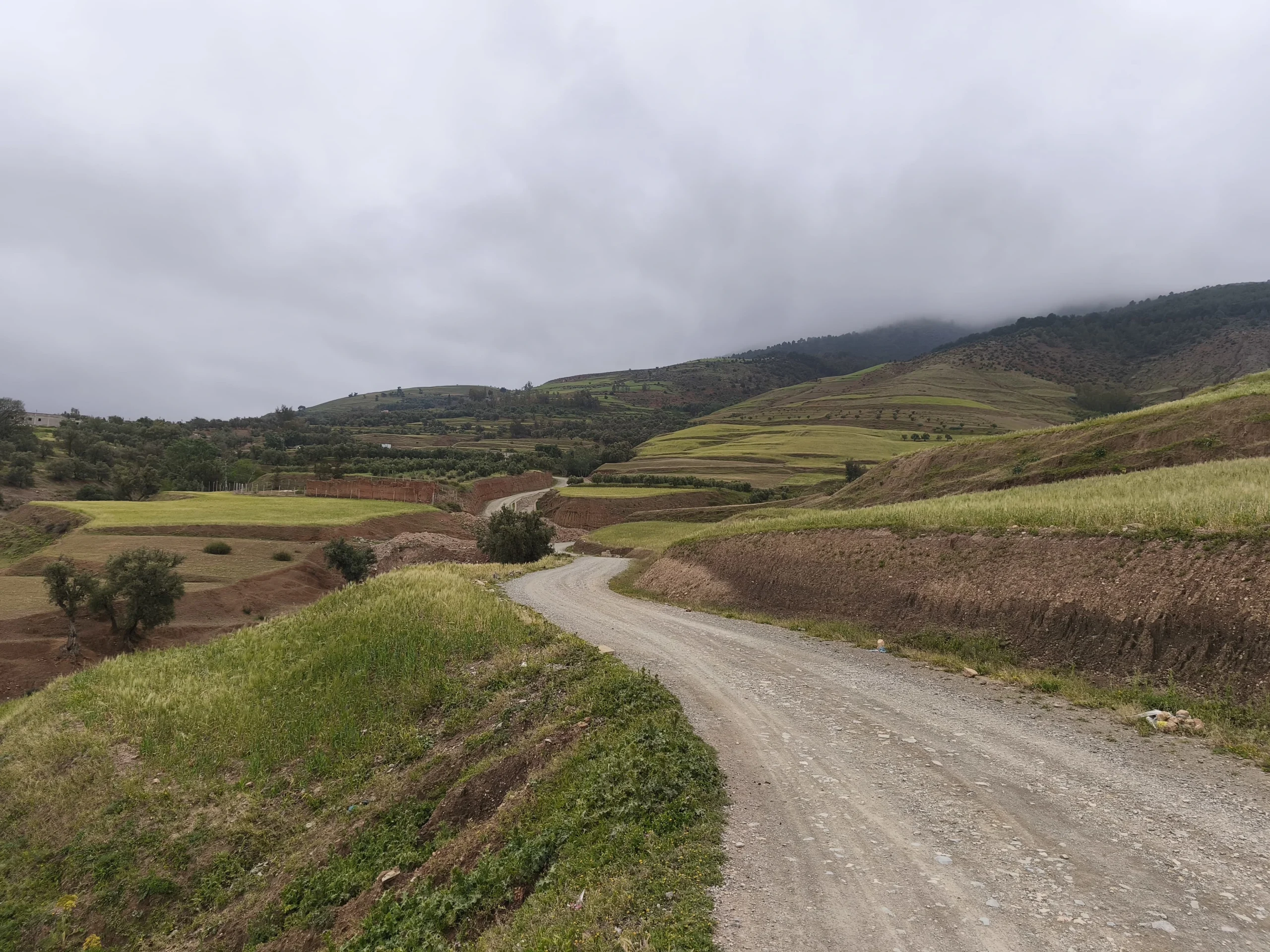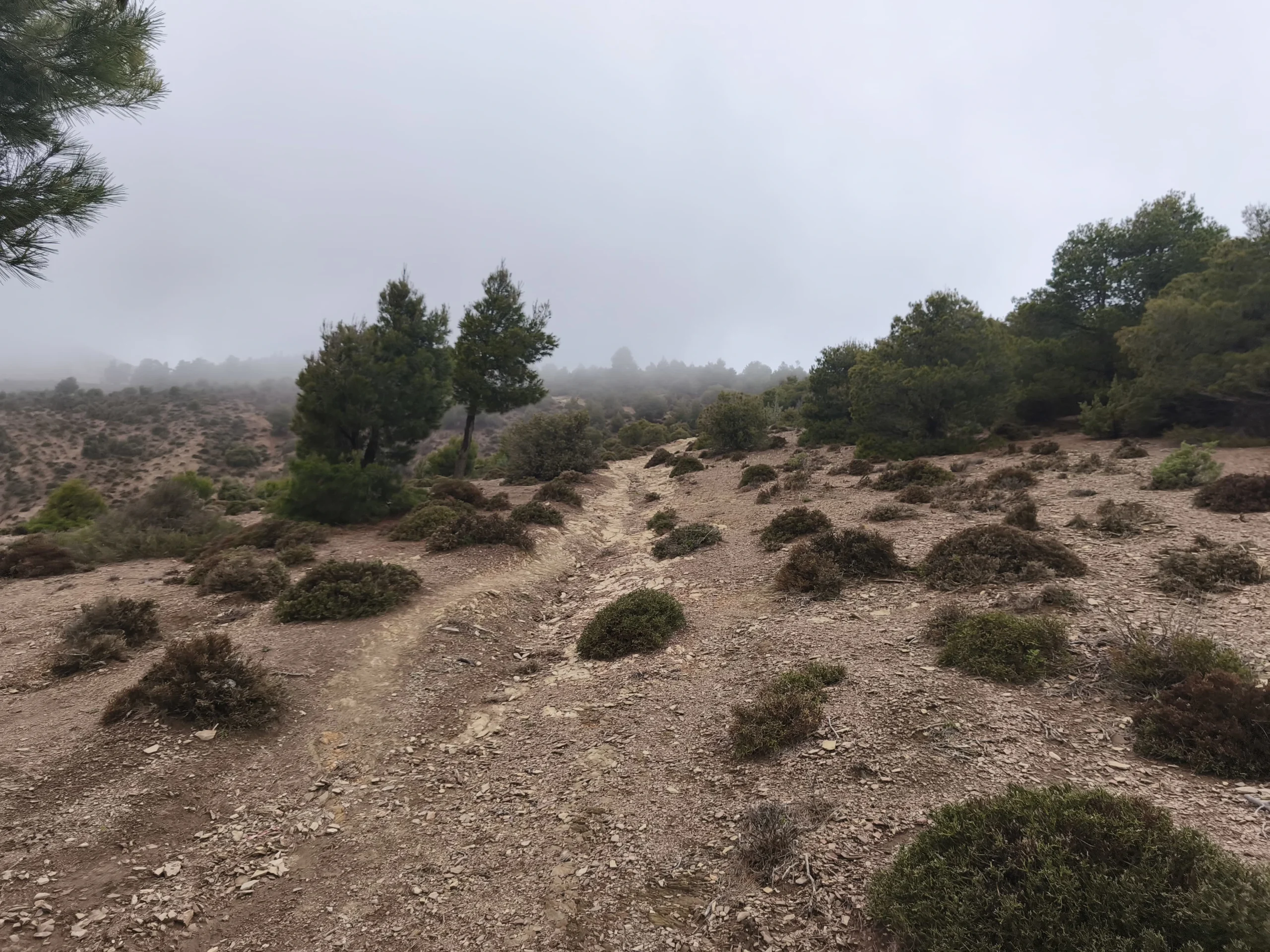I still remember the first time I laid eyes on Aït Tirghit. After a gentle climb, rounding that final bend to see stone houses nestled perfectly against the mountainside took my breath away. Tucked away at 1,600 meters above sea level in the embrace of the High Atlas, Aït Tirghit feels like a place where time has gracefully stopped.
If you're seeking authenticity away from Morocco's busy tourist trails, Aït Tirghit offers something truly special – a genuine connection with Amazigh culture, timeless traditions, and the rural soul of Morocco. This isn't just another village; it's a living, breathing community where ancient customs continue despite the challenges of mountain life. In Aït Tirghit, every stone tells a story, every meal celebrates the land, and every tradition weaves into the tapestry of an enduring culture.
Journey to Aït Tirghit: The Road Less Traveled

The journey to Aït Tirghit is an adventure in itself. Located just an hour and a half from Marrakech, this hidden village feels worlds away from city life. As you travel toward Aït Tirghit, you'll witness Morocco transform before your eyes.
The path to Aït Tirghit takes you past Lake Takrerkoust and through the small town of Amizmiz, where roads begin to wind upward into the mountains. At Amghrasse, local muletiers (mule handlers) will meet you to guide your trek into Aït Tirghit's mountain sanctuary.
What makes the journey to Aït Tirghit truly special is how it gradually unveils Morocco's soul. As you climb higher toward the village, Marrakech's energy fades into memory, replaced by expansive views of the plains below and the peaceful embrace of Aït Tirghit's mountain home. About an hour into your hike, you'll finally reach Douar Aït Tirghit, where traditional stone houses blend seamlessly with the landscape, each one telling stories of generations past.
Life in Aït Tirghit: A Village Where Time Follows Nature
Walking through Aït Tirghit feels like stepping through a portal to another era. In this special village, life flows with nature's rhythm, not the tick of a clock. Aït Tirghit's distinct seasons shape daily village life in profound ways, creating a connection to the land that most modern communities have lost.
Spring and Summer: The Seasons of Abundance
During spring and summer, Aït Tirghit transforms into a place of incredible natural beauty. The valley becomes lush with vegetation, and agricultural activities reach their peak. Villagers grow barley, potatoes, tomatoes, and turnips on terraced fields that have been carefully maintained for generations.
The walnut trees that the village is known for stand as living monuments, their roots reaching deep into both the soil and the village's history. These trees aren't just economically valuable – they're part of the community's identity, having witnessed generations of village life unfold beneath their branches.
Winter: The Season of Challenge and Community
Winter tells a different story. Heavy snowfall can leave the village in near isolation, with mountain paths becoming difficult or impossible to navigate. Yet despite these challenges, the villagers remain deeply attached to their home, finding ways to adapt and thrive.
This is when the community's shared hammam (bath house) becomes especially important. Villagers take turns heating it, creating not just warmth for their bodies but a warm center for community life. This shared bath house is apparently quite unique among villages in the region – a testament to the strong community bonds in Aït Tirghit.
The People of Aït Tirghit: Guardians of Tradition
What truly makes Aït Tirghit special isn't just its stunning setting or traditional architecture – it's the people who call it home. As you walk through the village, you'll notice something that can't be captured in photographs: the genuine smiles and warm welcomes from locals.
Many of the younger residents work in cities like Rabat during most of the year, but summer brings a joyful reunion. This is when the village comes alive with weddings, celebrations, and evening gatherings featuring Ahwash – traditional Amazigh music and dance performances that the village is known for.
Staying with a local family offers an unparalleled opportunity to experience this warmth firsthand. The hospitality isn't performed for tourists; it's simply the way of life here. You might find yourself invited to share a meal, learn about local crafts, or even participate in seasonal activities if you visit at the right time.
Natural Wonders Around Aït Tirghit
The natural environment surrounding Aït Tirghit is nothing short of breathtaking. The village is encircled by oak and terebinth trees, creating a forest environment rich with herbs and plant life. This abundant vegetation has encouraged many villagers to keep goats, which you'll often see grazing on the mountain slopes.
Water plays a crucial role in village life. Thanks to snowfall and rain, the local water table remains rich, and water rights have been carefully divided among villagers since ancient times – a system so well-designed that it prevents disputes even today.
From certain vantage points near the village, you can enjoy spectacular views of Marrakech's plains below and, in the opposite direction, the snow-capped peaks of the High Atlas, some reaching above 3,000 meters. On clear days, even the mighty Toubkal massif is visible in the distance.



















Trekking Adventures from Aït Tirghit
One of the places I always dreamed of visiting—and it didn't disappoint. Aït Tirghit is pure magic in every season. The people? Kind-hearted and genuinely welcoming. The air? So fresh it feels like nature is giving you a reset.
Surrounded by lush forests, flowing water, and organic farms free of chemicals, Aït Tirghit is a peaceful escape from the rush of the world. Just 6 km from the village, we hiked into the nearby forest with our guide, Said, along a breathtaking eco-trail through Tizi n'Tkouremt. Every step brought a new surprise.
From there, we glimpsed the village of Tizgui, nestled in the hills—untouched and serene. After the hike, we headed to Amizmiz for a well-deserved lunch. But the day wasn't over… Said had another surprise.
We ventured deep into Akkfay, starting from Lalla Takerkoust and ending near Marrakesh, discovering hidden corners of this magical region.
If you're looking for a peaceful escape, real connection, and untouched beauty—Aït Tirghit should be on your map.
For those seeking more adventure, Aït Tirghit serves as an excellent base for multi-day treks that connect to other traditional villages in the region.
Experiencing Authentic Amazigh Culture
A stay in Aït Tirghit offers more than just beautiful views – it's a chance to experience the living heritage of Morocco's indigenous Amazigh people. Here, culture isn't displayed for tourists; it's simply lived every day.
Traditional Architecture and Village Design
The stone houses of Aït Tirghit blend harmoniously with the surrounding landscape, using local materials and time-tested building techniques. With small windows and thick walls, these homes stay naturally cool during summer heat and retain warmth during cold mountain nights.
The village layout itself tells stories of community priorities – communal spaces for gathering, strategic water access points, and homes arranged to maximize protection from harsh weather while maintaining close community bonds.
Agricultural Traditions and Seasonal Rhythms
Agriculture in Aït Tirghit follows methods passed down through generations, adapted perfectly to the mountain environment. Terraced fields maximize limited arable land, while irrigation systems distribute precious water with remarkable efficiency.
Different crops are planted according to carefully observed seasonal patterns, with each household contributing to and benefiting from the collective agricultural knowledge.
Culinary Heritage
Food in Aït Tirghit reflects what the land provides. Simple, nutritious meals feature locally grown vegetables, barley, and occasionally meat from goats raised in the surrounding mountains. Walnuts from the village's famous trees appear in many dishes.
One of the joys of staying with a local family is experiencing these traditional foods – often cooked over open fires and seasoned with herbs gathered from the surrounding mountains.
Practical Information for Visitors
If you're inspired to visit Aït Tirghit, here's what you need to know to plan your trip:
Best Time to Visit
The ideal time to visit Aït Tirghit is from late spring (May) through early fall (September), when mountain trails are clear and the weather is pleasant. Summer (June-August) brings the most activity to the village as former residents return for holidays, offering a chance to experience local celebrations and music.
Winter visits (November-March) are possible but challenging due to snow and cold temperatures. However, for experienced mountain travelers, this season offers a rare glimpse of traditional winter life in the Atlas.
Getting There
The most common approach is from Marrakech:
- Travel to Amizmiz (about 1 hour from Marrakech)
- Continue to Amghrasse (the starting point for trekking)
- Hike approximately 2.5-3.5 hours to reach Aït Tirghit
While independent travel is possible, hiring a local guide is highly recommended, both for finding the best routes and for cultural interpretation.
Accommodation
Staying with a local family provides the most authentic experience. Several homes in the village welcome guests, offering simple but comfortable accommodations and home-cooked meals.
For those wanting more organized arrangements, guided treks with pre-arranged homestays can be organized from Marrakech. The price has not been determined. To book, contact us.
What to Bring
- Good hiking boots
- Layers of clothing (mountain temperatures can vary significantly between day and night)
- Respectful clothing that covers shoulders and knees
- A small gift for host families (tea, sugar, or school supplies for children are always appreciated)
- Basic first aid supplies
- Water purification if you're sensitive to local water
- Cash (there are no ATMs in the mountains)
Cultural Considerations
- Ask permission before photographing people
- Respect local customs regarding modest dress
- Learn a few basic Amazigh or Arabic greetings
- Be prepared for simple living conditions
- Embrace the slower pace of mountain life
Why Aït Tirghit Matters: A Living Treasure in Modern Morocco
In today's rapidly changing Morocco, Aït Tirghit stands as something increasingly precious – a living connection to ancient wisdom. While cities grow and lifestyles modernize, Aït Tirghit preserves sustainable practices and community bonds that have sustained its people for centuries.
Aït Tirghit isn't just a picturesque village; it's a keeper of knowledge. Its water management systems, perfected over generations to prevent conflict; its communal hammam that strengthens community bonds; its seasonal celebrations that honor the passage of time – all represent wisdom increasingly relevant in our changing world.
As climate uncertainty grows and modern life often disconnects us from community, Aït Tirghit demonstrates resilience, resource stewardship, and social connection that we all might learn from. By visiting this special village with respect and genuine interest, travelers support its continuation while carrying its lessons home.
Conclusion: My Invitation to Experience the Magic of Aït Tirghit
Aït Tirghit isn't just a destination – it's an encounter with Morocco's soul that stays with you long after you've returned home. When I think of Aït Tirghit now, I don't just remember stunning views or interesting architecture; I remember faces, stories, and moments of connection that changed how I see the world.
In Aït Tirghit, you'll find something increasingly rare – a place where authenticity isn't created for tourists but simply exists as a way of life. Where meals aren't just food but celebrations of the land's bounty. Where conversations happen at human pace, not dictated by notifications or schedules.
If you're seeking genuine connection, peaceful reflection, and wisdom from a way of life that has thrived for centuries, I can't recommend Aït Tirghit enough. This small village, tucked high in the Atlas Mountains, truly is one of Morocco's hidden paradises – a place where time stands still and life's simplest pleasures reveal themselves as the most profound.
As they say in Tamazight (the Amazigh language): "Yiwi-d iman-ik" – Come as yourself. The people of Aït Tirghit will welcome you with open arms and open hearts.
Have you dreamed of visiting a traditional Moroccan village like Aït Tirghit? What aspects of this timeless community most intrigue you? Share your thoughts in the comments below – I'd love to hear from you!
Frequently Asked Questions About Aït Tirghit
Aït Tirghit is located in the western High Atlas Mountains of Morocco, approximately 1.5 hours from Marrakech. It sits at an elevation of 1,600 meters above sea level.
While technically possible, a day trip would be very rushed and wouldn't allow you to truly experience village life. An overnight stay is highly recommended, with a two or three-day trek being ideal.
While not strictly necessary, a local guide is highly recommended, both for navigation and cultural interpretation. Guides can be arranged in Marrakech or Amzmiz.
The primary language is Tamazight (the local Amazigh dialect). Some villagers also speak Arabic, and a few who work with tourists might speak basic French or English.
Electricity is limited and sometimes unreliable. Mobile phone coverage exists but can be spotty. It's best to assume you'll be largely unplugged during your visit.
Accommodation is simple homestay-style lodging with local families. Expect basic but clean rooms, traditional bedding, and shared facilities. The experience is authentic rather than luxurious.
The village is known for its walnuts and occasionally produces walnut oil. Traditional Amazigh textiles and crafts may also be available, though Aït Tirghit is not primarily a crafts center.
The hike from Amghrasse to Aït Tirghit is moderate, taking 2.5-3.5 hours with some uphill sections. Anyone with reasonable fitness can manage it, though it may be challenging for those unused to hiking or with mobility issues.
.

